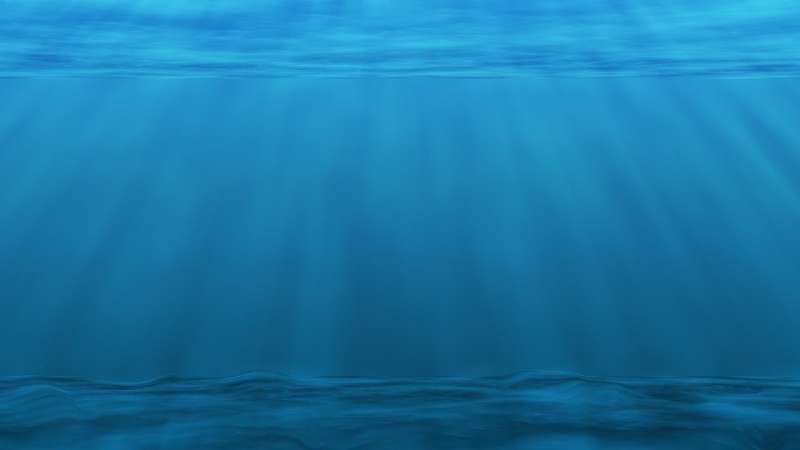This article has been reviewed according to Science X's editorial process and policies. Editors have highlighted the following attributes while ensuring the content's credibility:
fact-checked
peer-reviewed publication
trusted source
proofread
Diatom surprise could rewrite the global carbon cycle

When it comes to diatoms that live in the ocean, new research suggests that photosynthesis is not the only strategy for accumulating carbon. Instead, these single-celled plankton are also building biomass by feeding directly on organic carbon in wide swaths of the ocean.
These new findings could lead researchers to reduce their estimate of how much carbon dioxide diatoms pull out of the air via photosynthesis, which in turn, could alter our understanding of the global carbon cycle, which is especially relevant given the changing climate.
This research is led by bioengineers, bioinformatics experts and other genomics researchers at the University of California San Diego. The findings are published in Science Advances on July 17, 2024. The paper is titled "Mixotrophic growth of a ubiquitous marine diatom."
The team showed that the diatom Cylindrotheca closterium, which is found in oceans around the world, regularly performs a simultaneous mix of both photosynthesis and direct eating of carbon from organic sources such as plankton.
In more than 70% of the water samples the researchers analyzed from oceans around the world, the team found signs of simultaneous photosynthesis and direct organic carbon consumption from Cylindrotheca closterium.
The team also showed that this diatom species can grow much faster when consuming organic carbon in addition to photosynthesis.
Furthermore, the new research hints at the tantalizing possibility that specific species of bacteria are feeding organic carbon directly to a large percentage of these diatoms living all across the global ocean.
This work is based on a genome-scale metabolic modeling approach that the team used to unravel the metabolism of the diatom Cylindrotheca closterium. The researchers constrained their genome-scale metabolic model with global gene expression data obtained from the TARA ocean expedition. The researchers believe this is the first time genome-scale models have been used at a global scale.
The team's new metabolic modeling data support recent lab experiments suggesting that some diatoms may rely on strategies other than photosynthesis to intake the carbon they need to survive, thrive and build biomass.
The UC San Diego-led team is in the process of expanding the scope of the project to determine how widespread this non-photosynthetic activity is among other diatom species.
Are ocean bacteria feeding diatoms?
When the team looked at the physical and chemical parameters measured in their ocean water samples—including temperature, pH, salinity, light, nitrogen and carbon availability—they did not find any correlation between those parameters and a tendency by the diatoms to steer away from photosynthesis-only strategies.
However, the team found a clear signal when exploring specific bacterial populations co-existing with the diatom Cylindrotheca closterium in the ocean water samples. This finding hints at bacteria-diatom interactions that drive the simultaneous mix of photosynthesis and direct consumption of organic carbon—a phenomenon known as "mixotrophy."
The team believes that specific bacteria may be feeding the diatoms directly, helping these diatoms to be one of the most successful and important microbes on the planet, in terms of oxygen production, carbon sequestration, and as a foundation of food webs that support nearly all life in the ocean.
"Diatoms are major contributors to marine food chains and key drivers of the global carbon cycle. Previously, we have estimated all carbon cycling models on the assumption that the only role that diatoms play is in carbon dioxide fixation," said UC San Diego Professor Karsten Zengler, professor in the Departments of Pediatrics and Bioengineering and researcher in the Center for Microbiome Innovation at the Jacobs School of Engineering.
"Our findings demonstrate that this is not the case, but that diatoms simultaneously also eat organic carbon. In other words, we have shown that diatoms do not rely exclusively on carbon dioxide fixation for their growth and biomass production. We believe these results will have major implications for our understanding of global carbon cycling.
"While there have been curious observations in the laboratory regarding diatoms deviating from photosynthesis, it has been impossible to test what kind of metabolism these diatoms perform in the ocean—until now. This is because there are many, many genes involved in this process, and it's very difficult to delineate what process is active from gene expression data alone. Our approach gets around this challenge."
The research team hopes this work will stimulate interest in taking a much closer look at our understanding of the global carbon cycle, taking into consideration this new broader understanding of how ocean diatoms get their carbon.
What the bacteria feeding the diatoms may be getting out of the relationship is another question for further research.
More information: Manish Kumar et al, Mixotrophic growth of a ubiquitous marine diatom, Science Advances (2024). DOI: 10.1126/sciadv.ado2623. www.science.org/doi/10.1126/sciadv.ado2623
Journal information: Science Advances
Provided by University of California - San Diego


















